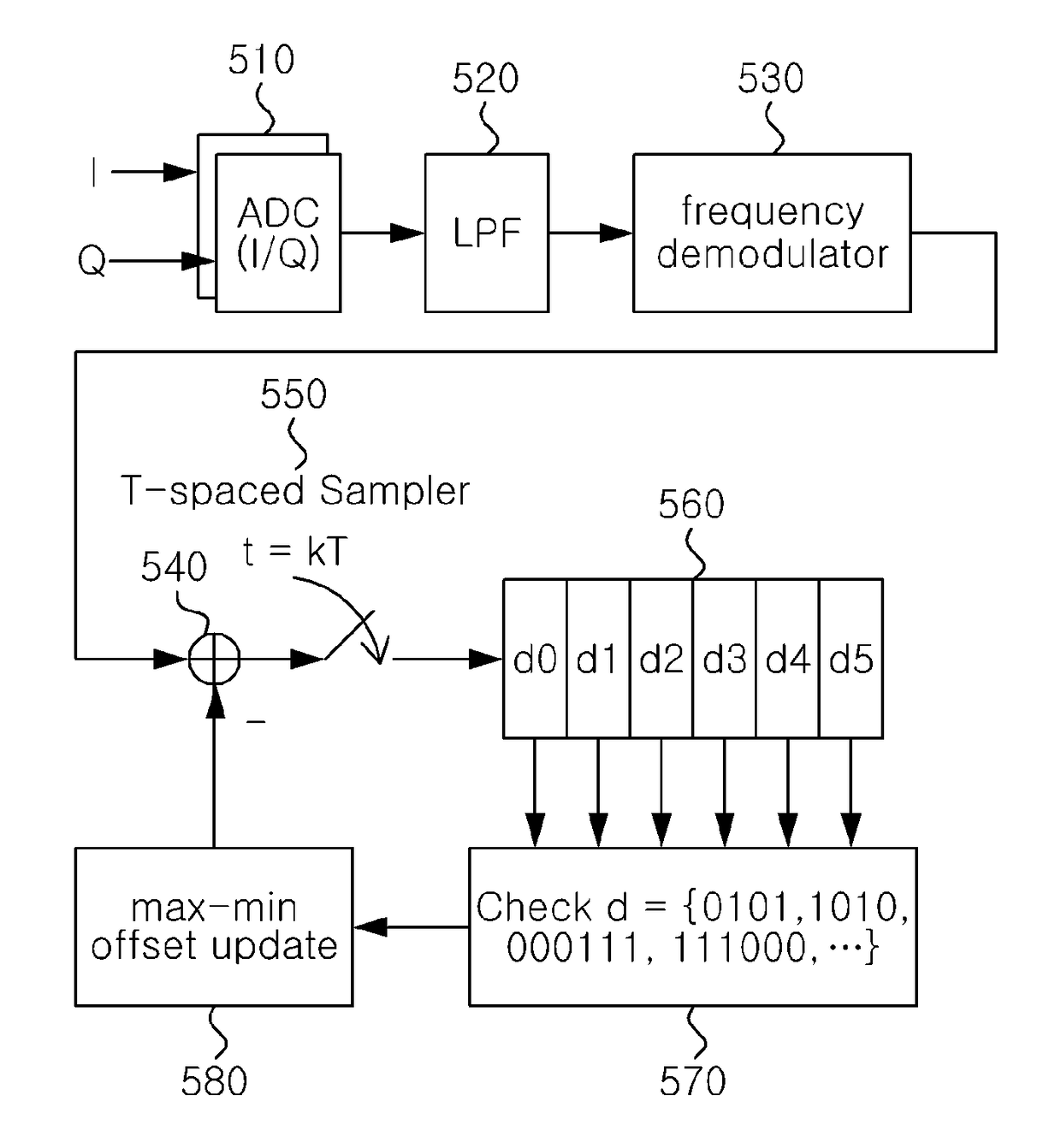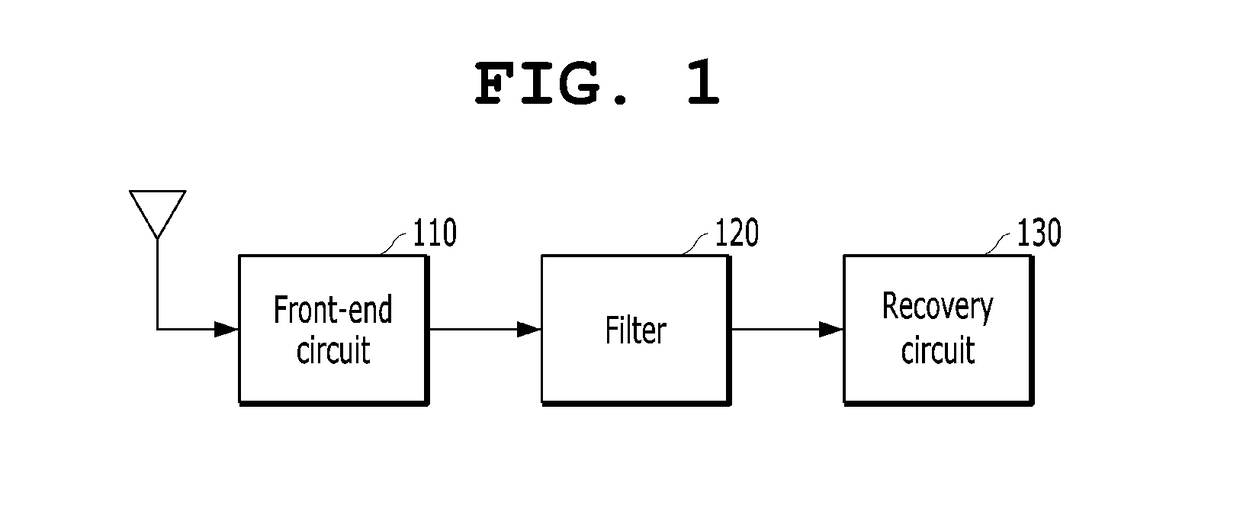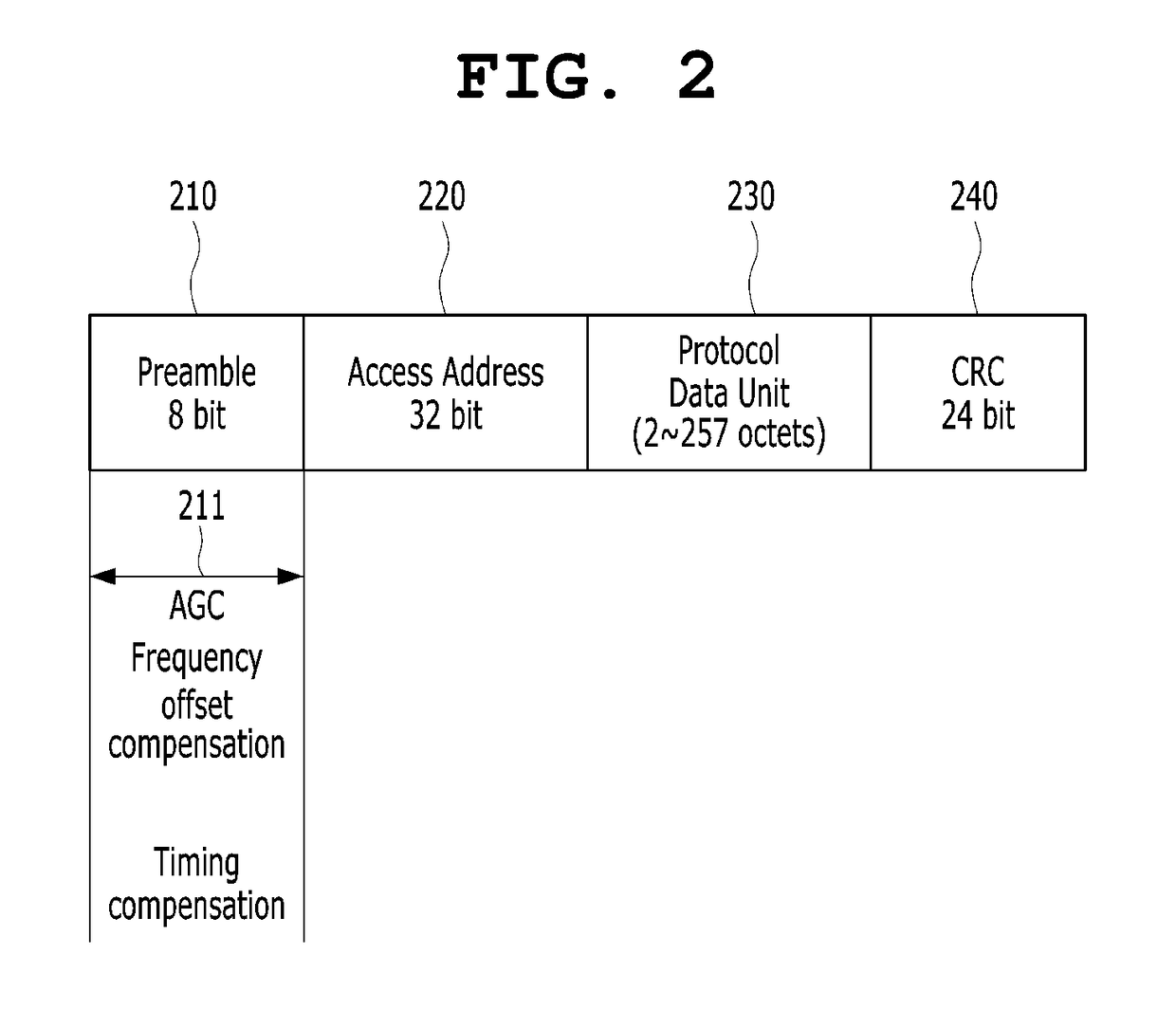Bluetooth signal receiving method and device using improved carrier frequency offset compensation
a carrier frequency offset and bluetooth technology, applied in wireless communication, phase-modulated carrier systems, wireless commuication services, etc., can solve the problems of affecting the performance of the signal, the estimated value of the carrier offset measured in the preamble interval is considerably poor, and the expected performance cannot be achieved. , to achieve the effect of improving the accuracy of the estimated value of the carrier offset, and reducing the cost of the signal
- Summary
- Abstract
- Description
- Claims
- Application Information
AI Technical Summary
Benefits of technology
Problems solved by technology
Method used
Image
Examples
Embodiment Construction
[0049]Embodiments of the present invention will be described in detail with reference to the accompanying drawings. In the following description of the present invention, a detailed description of a related well-known component or function will be omitted when it is determined that the detailed description may make the gist of the present invention obscure.
[0050]The prevent invention is not limited to the embodiments. Throughout the accompanying drawings, the same reference symbols designate the same components.
[0051]FIG. 4 is a diagram showing waveforms having passed through the frequency demodulator of a receiver and a “minimum-maximum average value” carrier offset estimation method.
[0052]When carrier offset occurs, a baseband frequency-demodulated waveform shows the state in which the average value of frequency shifts is not zero but has been biased by a constant value corresponding to the magnitude of the carrier offset. In this case, the constant value of the biased offset is i...
PUM
 Login to View More
Login to View More Abstract
Description
Claims
Application Information
 Login to View More
Login to View More - R&D
- Intellectual Property
- Life Sciences
- Materials
- Tech Scout
- Unparalleled Data Quality
- Higher Quality Content
- 60% Fewer Hallucinations
Browse by: Latest US Patents, China's latest patents, Technical Efficacy Thesaurus, Application Domain, Technology Topic, Popular Technical Reports.
© 2025 PatSnap. All rights reserved.Legal|Privacy policy|Modern Slavery Act Transparency Statement|Sitemap|About US| Contact US: help@patsnap.com



